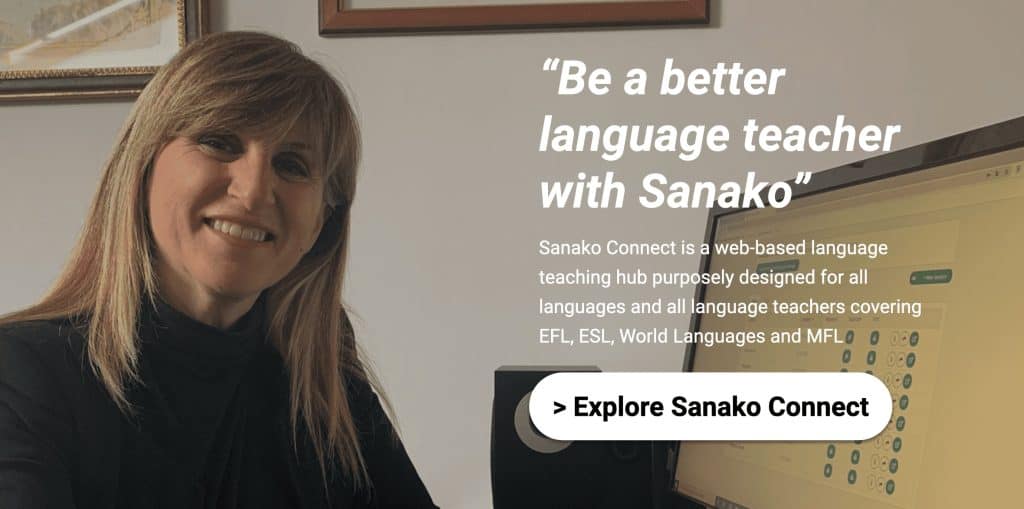If learning a new language really is the ultimate 21st Century Skill, then it’s surely important that the process truly supports students living in today’s digital-first world? Particularly when it’s becoming increasingly difficult to tell if new online content is being created by man or a machine.
Such digital content and technologies are transforming the traditional process of learning core language skills. As such, educators need to ensure that students are equipped with the skills and experience to thrive beyond simply learning their additional language. Moreover, learners should be able to take full advantage of new technologies to communicate and learn more effectively. As the Cambridge Life Competencies Framework makes clear: “the engaging and collaborative nature of the language classroom is the perfect place to develop and embed these key qualities.”
This blog post introduces the concept of digital literacy, explains the rationale for making it part of your language teaching process and highlights some potential routes for delivering it in your classroom.
What is digital literacy?
This is a generic term used globally by governments to describe a wide range of media literacy skills and digital competences that are increasingly part of national education curricula. Broadly, digital literacy refers to the ability to make safe, effective and responsible use of the online technologies now available to students.
It’s crucial to note that it’s not just about being able to use technology – it’s also important for students to understand the social practice around digital media forms. The frequent use of technology is not sufficient to, for example, help students correctly identify pieces of fake news, to check the reliability of information they find online or to create effective prompts for ChatGPT.
Digital Literacy also includes the development and use of other key 21st Century Skills such as technical, cognitive, social, and emotional skills. The above Cambridge Framework also identifies that it is “crucial in helping students become lifelong learners and involves the use of other essential life competencies such as Communication, Collaboration, Creative Thinking and Critical Thinking.”
How is digital literacy relevant to language teaching?
Most importantly, it has been widely acknowledged that learners of any additional or second language need to develop rich repertoires of digital literacies to be able to read, write, and communicate in digital spaces in their L2. Without this, L2 learners are really at a significant disadvantage.
Furthermore, in his book “The Essential Elements of Digital Literacies”, Belshaw identifies eight core components to digital literacy. He believes that students need to become cultural, cognitive, constructive, communicative, confident, creative, critical and civic learners.
Of course, these values will be immediately familiar to language educators, who will recognise these qualities in their students. They will also appreciate that language learning brilliantly prepares students to “be creative, experiment, communicate, disseminate, take responsibility, work together, exchange and respectfully discuss opinions.” (Mantiri et al, 2019)
Moreover, as the British Council points out, language educators are “teachers of the language of global communication.” If that communication is now increasingly digital, then surely that’s where our focus should be?
After all, doing so will support adult language learners to learn vital new skills that will help them as parents and to get ahead in the workplace. Younger learners will also benefit by being better prepared for future job opportunities. Given the importance placed on relevant, real-life language learning context, there’s also an immediate benefit in making classes more relevant and (dare I say it?) interesting.
What are the benefits of digital literacy in the language classroom?
In addition to the above, there are very clear benefits to teaching digital literacy in the language classroom. These include:
- Improved reading and listening skills – Students will need to work hard to understand what information or message each piece of online content is trying to convey.
- Enhanced critical skills – Your learners will quickly learn to analyse and review online material to identify what’s genuine and what’s not.
- And in doing so, they’ll become more confident in forming their own opinions and in communicating them more fluently.
- New creativity skills – Students should have the opportunity to create their own digital content, whether that’s a blog, a video or a podcast.
- Increased cultural appreciation – Accessing digital content in their L2 will give students’ immediate exposure to how the language is being spoken / used today, which will help them better understand the cultural context behind it.
How might language educators build digital literacy?
There’s already a wealth of information and great lesson planning ideas online to help educators embed digital literacies in the language classroom. Rather than reproducing them, we’ve summarised some of the best below. Please check them out!
The Cambridge Life Competencies Framework identifies three core areas for language educators to focus on within digital literacy. These are:
Using tools and creating digital content. Students could learn how to:
- Build confidence and skills when searching for and manipulating online content and data
- Learn how to make critical judgements about the material they find online
- Identify which tools are most appropriate for which task (e.g creating a blog, a newsletter or a podcast)
- Create their own digital content (e.g a TikTok, a video etc) in response to a classroom or homework task
Sharing and interacting online. Students could learn how to:
- Explore how to safely and easily communicate with peers and native speakers using digital tools (e.g WhatsApp, Zoom etc)
- Collaborate with other students to tackle a project (e.g Using a collaboration tool such as Miro to plan a campaign or to plan a presentation)
- Interact appropriately online with other students and others outside of school
Safety and wellbeing online. Students could learn how to:
- Recognise and react to risk and online threats
- Stay safe online at school and at home
- Handle social media and maintain their wellbeing and that of their friends
In a recent blog post, The British Council identified four core areas in which digital literacies could be developed and delivered in the language classroom. These build on the areas identified above and are summarised below. Students could:
1. Focus on language: print and texting literacies: Given the importance of text communication for this audience, leveraging it in the classroom can be a powerful way to build engagement and to encourage language production. Not every output for a written task has to be an essay!
2. Focus on connections: personal, participatory and intercultural literacies: These skills can be developed by encouraging students to build L2 profiles on social media (actual or simulated). Students can build a professional profile, blog, vlog or create podcasts about their lives and what matters to them. They could also participate in and consume content from online L2 language communities.
3. Focus on information: search and information literacies: Many students struggle to develop these skills in their L1, so it’s of vital importance that they can do so in their L2.
4. Focus on (re)design: remix literacy: Nothing in the online space remains unchanged for long. Audio, cartoon and film content are all rapidly clipped up, added to, recycled and “remixed” to then be circulated on social media. This is a great way of inspiring students’ creativity and building their understanding of media forms.
One final note – it’s important to stress that developing students’ digital literacy skills can be carefully included as part of your normal teaching practice alongside the core language teaching educators deliver. The responsibility for these skills is not yours alone! It requires a whole school approach in which digital literacy is carefully integrated into all subjects. But as we’ve outlined, these skills are transformational for language learners.
If you are interested in learning more about how Sanako products support language teachers and students and would like to see how they could benefit your institution, click the banner below to learn more and book a FREE remote demo.

